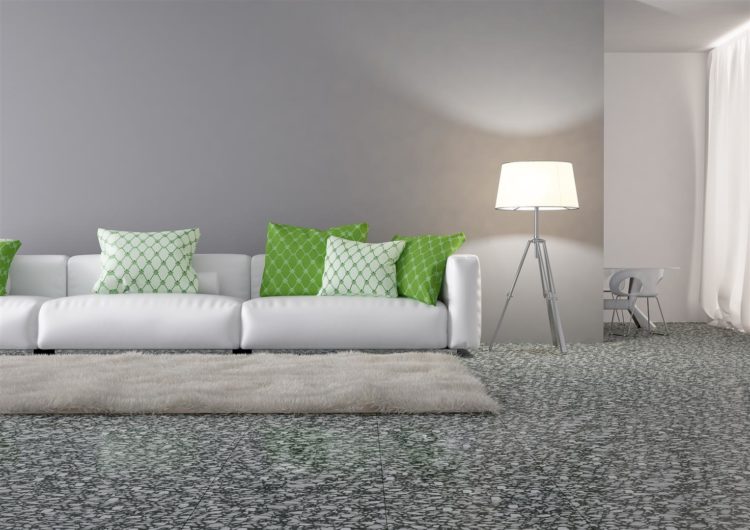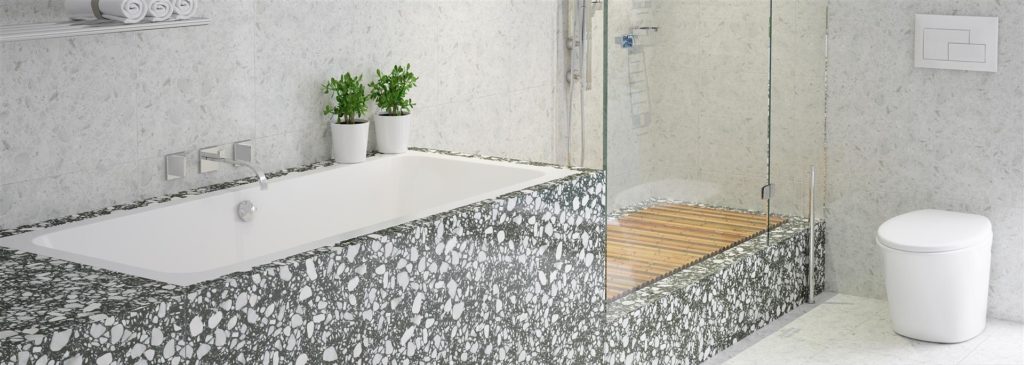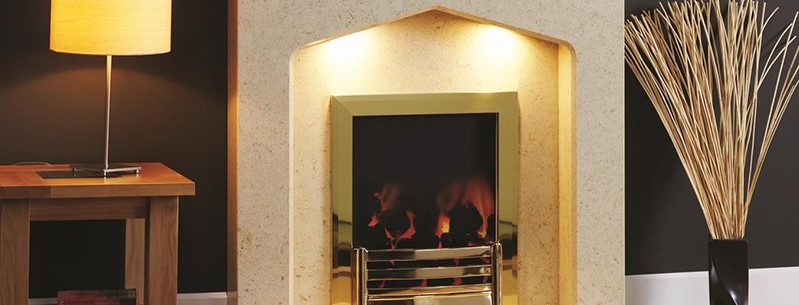Several years ago — ahead of its 500th anniversary — Michelangelo’s David received a cleaning that lasted eight months and cost nearly half a million dollars. Fortunately, with a few guidelines in mind, keeping your own marble surfaces in tip-top shape will be significantly easier.
To maintain their timeless elegance and one-of-a-kind look, here’s a room-by-room guide to tackling any mess on the marble masterpieces in your home.
The Foyer and Hallways
These areas are the frontline in combating foot traffic. From dusty kids’ shoes to muddy paws, most of the dirty damage will end up here. Get a game plan for cleaning your marble-floored foyer before heading to your utility closet.
The Mess: Everyday Foot Traffic
Grab a broom with soft bristles and sweep up as much as you can, paying close attention to the areas near walls and doors. (Though marble is highly scratch-resistant, avoid using a vacuum, as it could be damaging.) Once the debris is gone, wipe the area with a soft-headed mop using warm distilled water and a pH-neutral soap like Simple Green Stone Cleaner. The warm water will help cut through the left-behind grime.
For the best results, consider cleaning your marble foyer floor once a week and investing in a sturdy rug.
Helpful hint: Place a doormat outside so people can wipe their shoes before entering. Tracked-in dirt and grit can act as an abrasive and scratch the marble surface, making it appear dull over time.
The Mess: A Sticky Situation
If you find gum or grease stuck to your floor, scrape it off with a plastic putty knife — despite marble’s durability, using a metal knife directly on the surface could be damaging.
The Bathroom
Our bathrooms are a space of solace, so take care as you maintain your marble bathroom countertops and shower.
The Mess: Makeup Mayhem
Most women know the struggle: You spill a drop of liquid foundation in the sink or smudge dark-hued lipstick on the countertop. In a hurry, you might leave it.
Because of cosmetics’ greasy texture, you’ll have to treat these messes a little more aggressively:
- With a paper towel, wipe the area clean. Avoid rubbing as much as you can.
- From there, you’ll be face-to-face with your stain. Dilute dish soap with warm water to break up the leftover substance.
- Lightly rinse with warm, distilled water.
- Wipe away the remaining residue with a microfiber towel.
You may have to repeat this process a couple of times until the stain is completely gone.
The Mess: Shower Residue
You’ll need a few tools for your cleaning regimen:
- Warm, distilled water
- A soft towel (microfiber works best)
- A cleanser geared toward marble surfaces
- A squeegee
Spray the area with the marble cleaner. (Choose cleaning products carefully: Heavy cleaners designed to remove calcium, lime, or rust can be harmful to marble surfaces.) Then, rub the entire area with the towel and cleaner. Wipe each of the areas with warm, distilled water, and then dry the surface.
What about soap scum? Combine warm water and a mild, pH-neutral detergent in a plastic bucket. Work a section of the shower at a time, rubbing the solution into the area with a clean, soft sponge. Rinse the area with warm water, and use a squeegee to get rid of excess water.
In fact, it’s a good idea to get in the habit of using a squeegee each time you take a shower. Removing the water from the marble and glass surfaces will prevent water scaling and etching of the surface, which can make marble appear cloudy over time.
The Kitchen
The kitchen is the heart of your home, and — by proxy — your marble kitchen island is one of the space’s most used features and a popular gathering spot.
The Mess: Cooking Clutter
Because marble is made primarily of calcium carbonate, acidic foods — lemons, limes, tomatoes, etc. — can eat away at the calcium carbonate, which causes pitting. Keep a cutting board close by and immediately wipe up any spills to avoid staining. Warm, distilled water is also recommended here.
Another thing: Avoid direct contact with heat sources like pots, saucepans, and deep fryers by buffering them with trivets or other heat-resistant pads.
Other Spaces
Your most beloved marble spaces may reside in other areas of your home such as around a fireplace or in a home bar.
The Fireplace
Whether ingrained in the mantle or on the surrounding floor, there are many potential messes around a fireplace. Mainly, you’ll want to watch out for the soot and smoke stains. If the stains don’t budge, try some diluted household bleach on the area.
Home Bar
A home bar’s No. 1 enemy is red wine. Even rings left by the bottle have the potential to leave a stain on your marble countertop. As soon as you spot a spill, make a “poultice” paste mixture to draw out impurities, like so:
- Wipe down the area with distilled water.
- Depending on the color of your stone, mix hydrogen peroxide with baking soda (light marbles) or acetone and baking soda (dark marbles), soak the mixture in paper towels, and use them to cover the stained area.
- Cover the area in plastic wrap with the edges taped down.
- Remove the plastic wrap after 24 hours, but leave the still-damp paper towels in place to dry.
- Rinse the area with distilled water and dry it with a microfiber towel.
No matter where the surface, keep in mind that marble is a relatively soft stone that will dull with use — and that natural patina it gets after years of use is part of its charm. One trip to Rome is enough to see the beauty that marble can maintain over the years.
Have more questions about the proper care and maintenance of your marble surfaces? Find a dealer near you to help.
—
Staci Parks is a writer, editor, researcher, and adjunct journalism professor. By day, she works in healthcare marketing.



